Munich was once again the host city for one of the 2025 Adidas NextGen Euroleague Qualifier tournaments. The organization’s own Adidas NextGen Select Team took home the title, beating a very scrappy and well-coached Valencia Basket team in the final by 88-100. NextGen Select Team’s 6’8 C Arminas Vilkas earned MVP honours and a spot in the All-Tournament Team, alongside 6’8 F Nacho Campoy (Real Madrid), 6’6 G Mark Morano (Cedevita Olimpija Ljubljana), 6’5 F Tomas Talcis (Valencia Basket) and 6’9 F Mathias Vazquez (NextGen Select Team Munich).
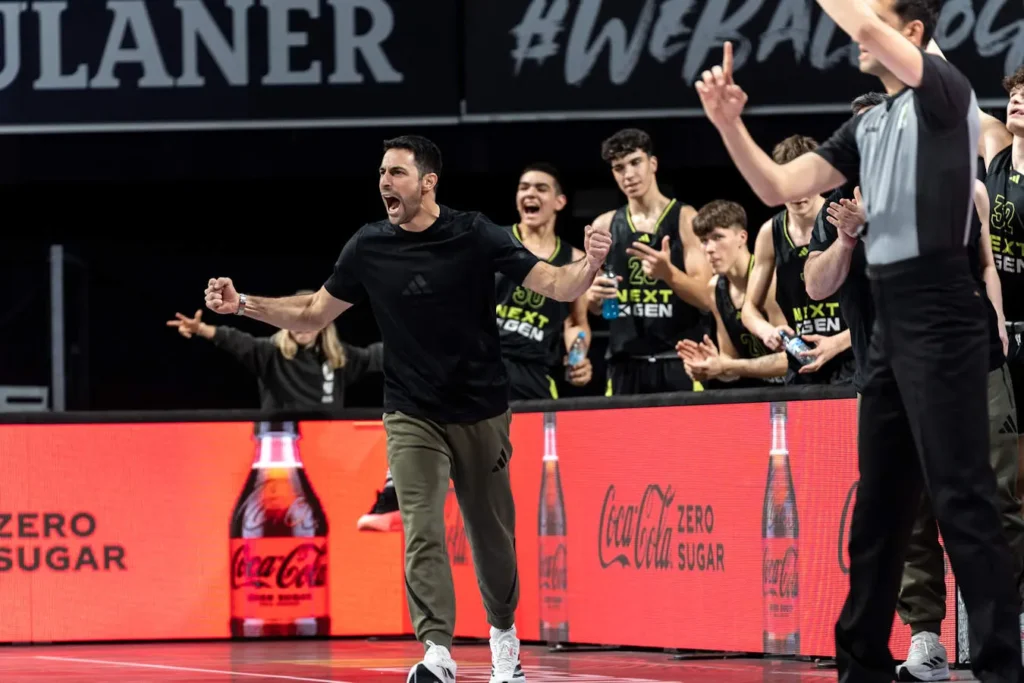
NextGen Team Munich
This NextGen Team Munich had an excellent run to the title, beating frontrunners Real Madrid in the group phase before fending off a solid Valencia Basket in the final. In a very well-balanced squad with plenty of standout talent, it was 6’9 F Mathias Vazquez who combined the most intriguing flashes and the most solid all-around performance. A 2008-born F listed at 6’9, with great strength and mobility and having already made his debut both with Real Betis’ first team in Spain’s Primera FEB and, more impressively, with Brazil’s senior National Team, Vazquez led the way here for the NextGen Select Team, playing with physicality and force, scoring when called upon —including 19 points in the final— and being very vocal on both ends, directing teammates and generally looking like the most poised and controlled player on the court. On a team that won with physicality, solid play and surprisingly good chemistry, Vazquez was the most indispensable player despite his quiet averages of 9 points, 4 rebounds and 2 assists per game, taking tough assignments on defense, attacking the basket with force, contributing on the boards and making a few timely jumpshots both off the catch and off the dribble. Flying a bit under the radar in Real Betis, Vazquez showed here in Munich why he’s considered by some scouts as one of the very best prospects in the international 2008 generation.
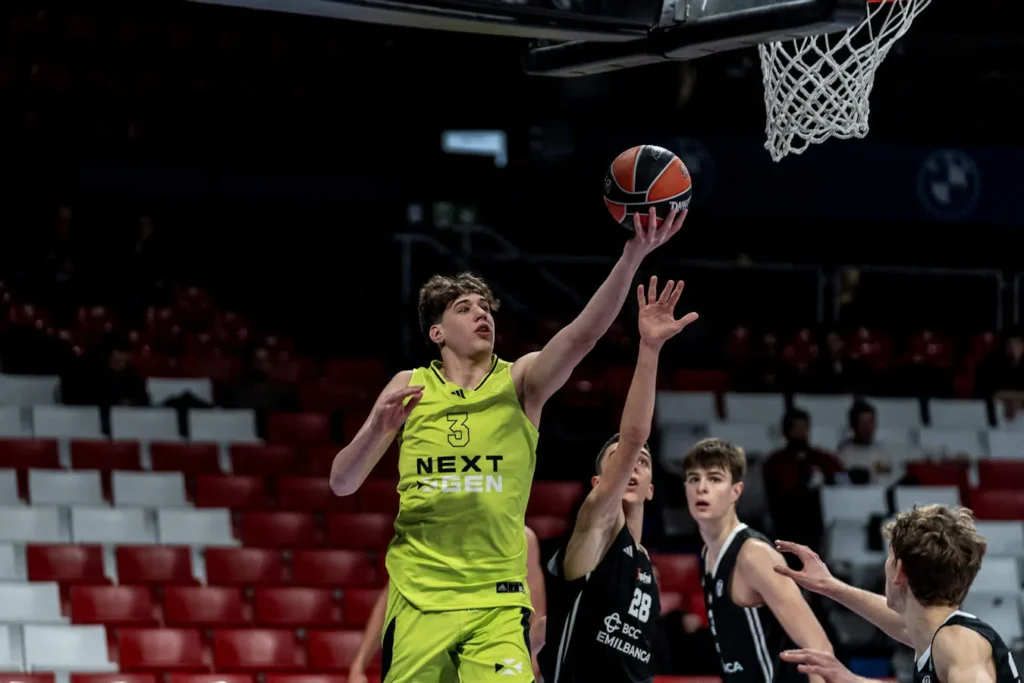
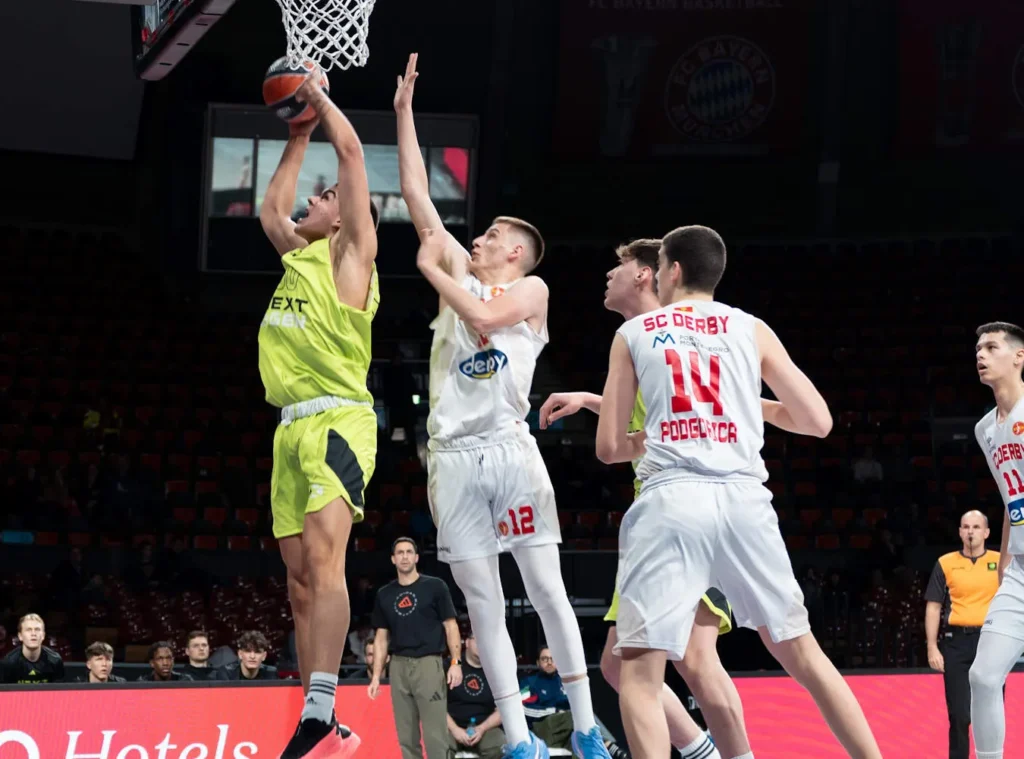
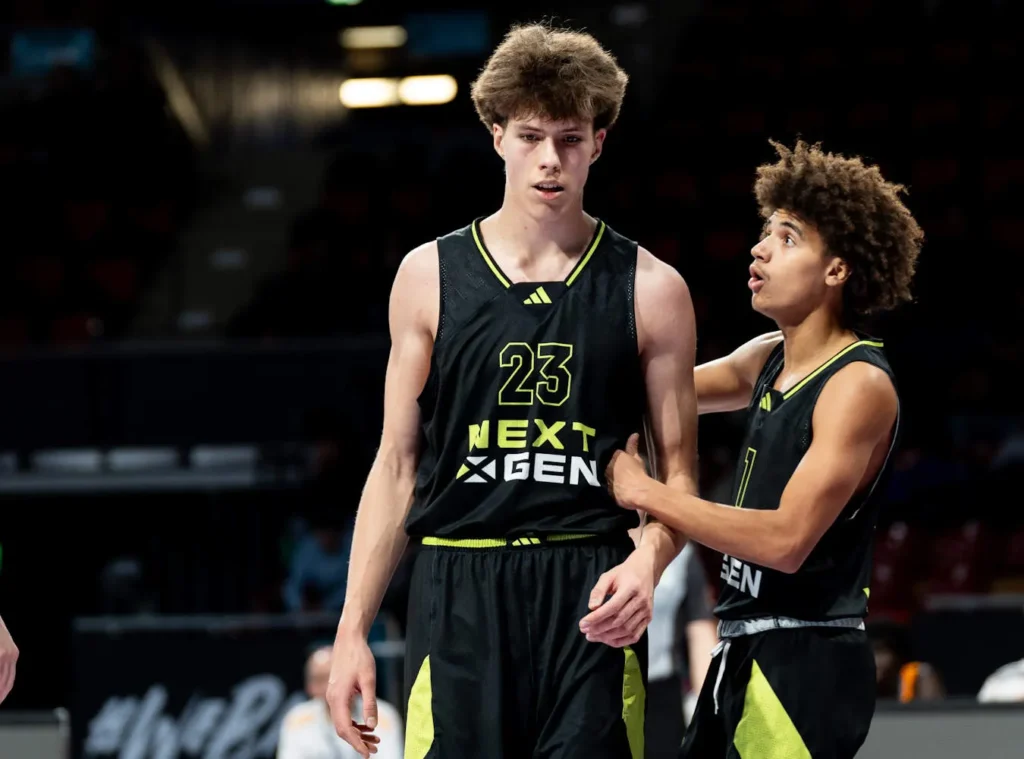
6’8 C Arminas Vilkas took home MVP honours by playing a very Arminas-Vilkas-like tournament: full of intensity, energy, physicality and effort. Slightly undersized at 6’8, Vilkas makes up for his lack of size with a combination of strength, smart positioning, athleticism and a relentless motor. Vilkas averaged 10 points and 7 rebounds per game, consistently making an impact on the boards and as a finisher, and contributed on defense too with 1 steal and 2 blocks per game. Despite not being as highly touted as other Lithuanian players from the 2007 generation, Vilkas is on an interesting upwards trajectory, following up a good summer for Lithuania U17 with an MVP award here in Munich, and establishing himself as prospect to watch for college coaches. Despite not matching the lofty numbers he regularly puts up with Argentina in FIBA competition, 6’6 G Felipe Minzer nonetheless showed many of his strengths here. The Argentinian guard averaged 7 points, 5 assists and 4 rebounds per game, using his change-of-pace on the ball and his court vision to generate baskets for himself and for others and being one of the main creators for the winning NextGen Select team. 6’9 Dorian Rinaldo, who had barely been scouted outside of France having never played for the France youth National Team or been in INSEP’s programme, had an excellent outing in Munich with 10 points and 3 rebounds per game. An athletic, long big man with good strength, fluidity and leaping, Rinaldo had a couple of intriguing stretches and showed that he could compete with the very best in Europe. Given his physical profile and his track record over the last two seasons, he should firmly be on college coaches’ radars. Finally, 6’5 PG Guillermo del Pino showed off his handle, individual creation and shot-making abilities while putting up 10 points and 4 assists per game, with a few interesting scoring stretches while picking his spots selectively on a stacked NextGen Select Squad.
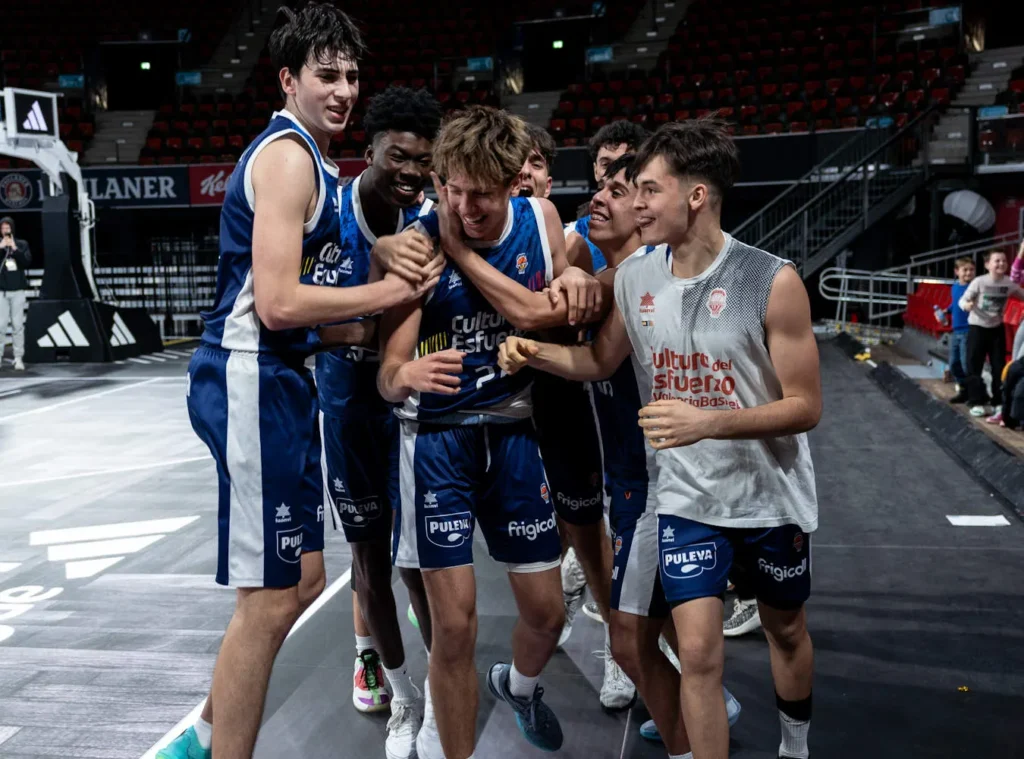
Valencia Basket
This tournament was the coming out party for 6’6 Lithuanian F Tomas Talcis, who embodied all the virtues of a very well-coached, gritty, tough-nailed Valencia Basket squad that beat a higher-touted Cedevita Olimpija Ljubljana squad to advance to the final and then gave the NextGen Select team a tough game there. The Lithuanian forward averaged 14 points and 6 rebounds per game and even came up huge in the key Group Phase game against Cedevita Olimpija Ljubljana with the game winning rim-finish to secure a spot in Sunday’s final. Talcis has an atypical background having never been on the Lithuanian federation’s radar and playing at times on Valencia Basket’s lower-level squads in the past, but confirmed here what he had already glimpsed at in the U18 Torrent Tournament at the start of the season and has established himself as a valuable player at the top level of European youth basketball. Playing more as a play finisher than as a creator, taking on the toughest defensive assignments and contributing on the boards and as a connector in Valencia Basket’s egalitarian offense.
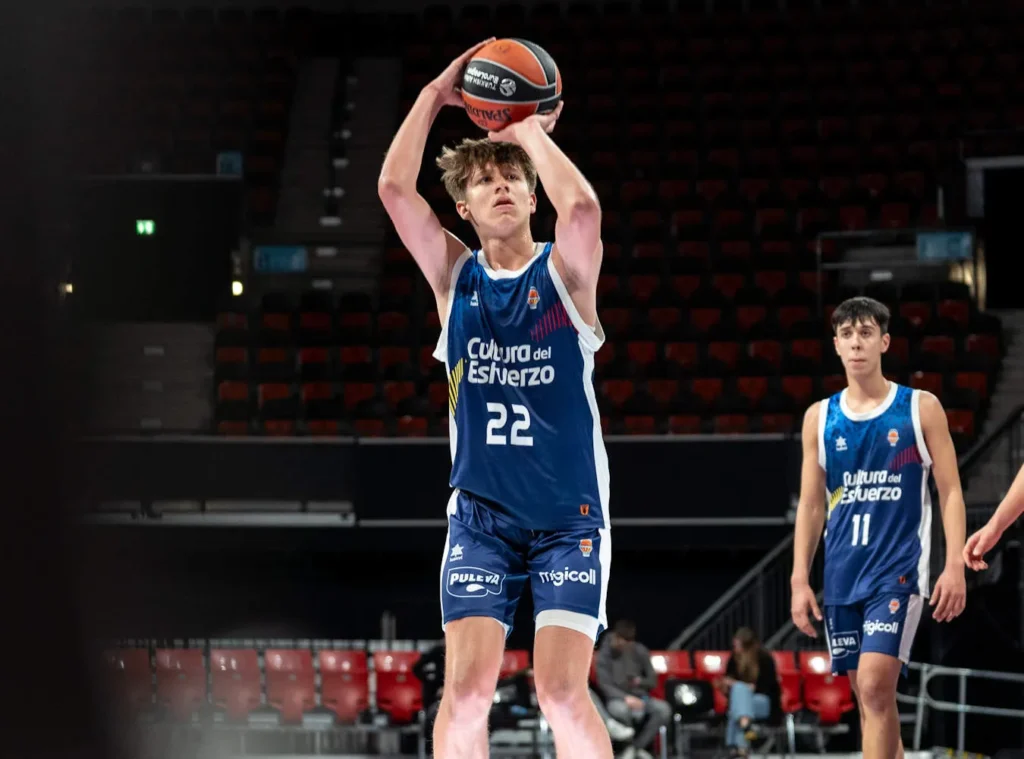
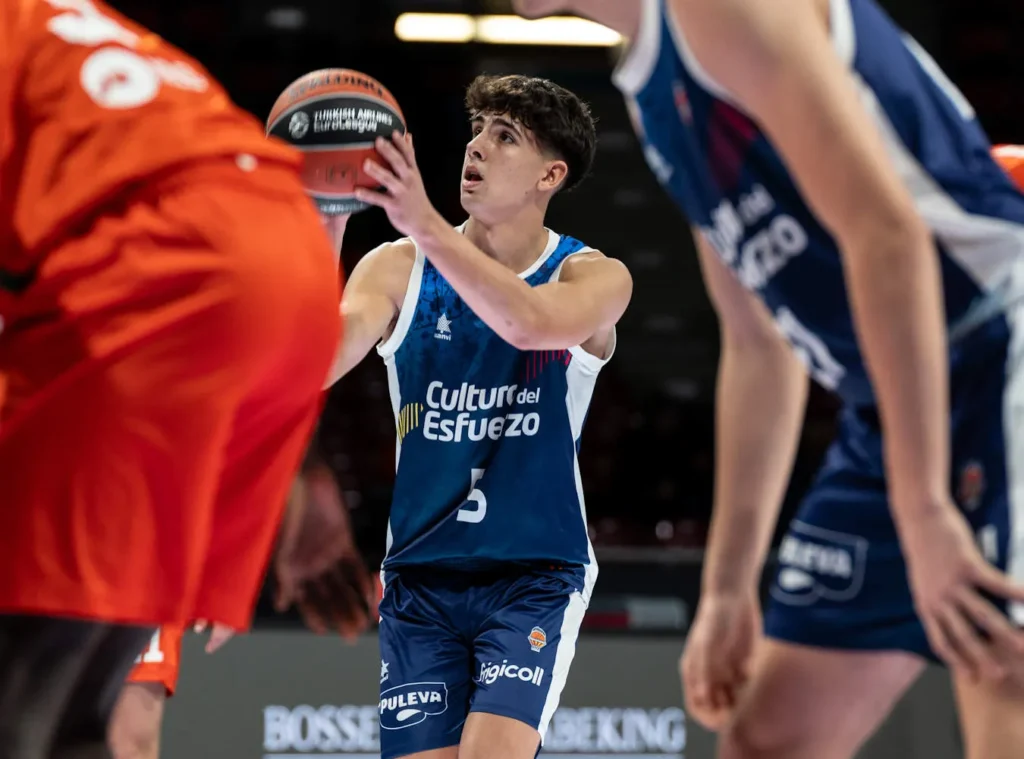
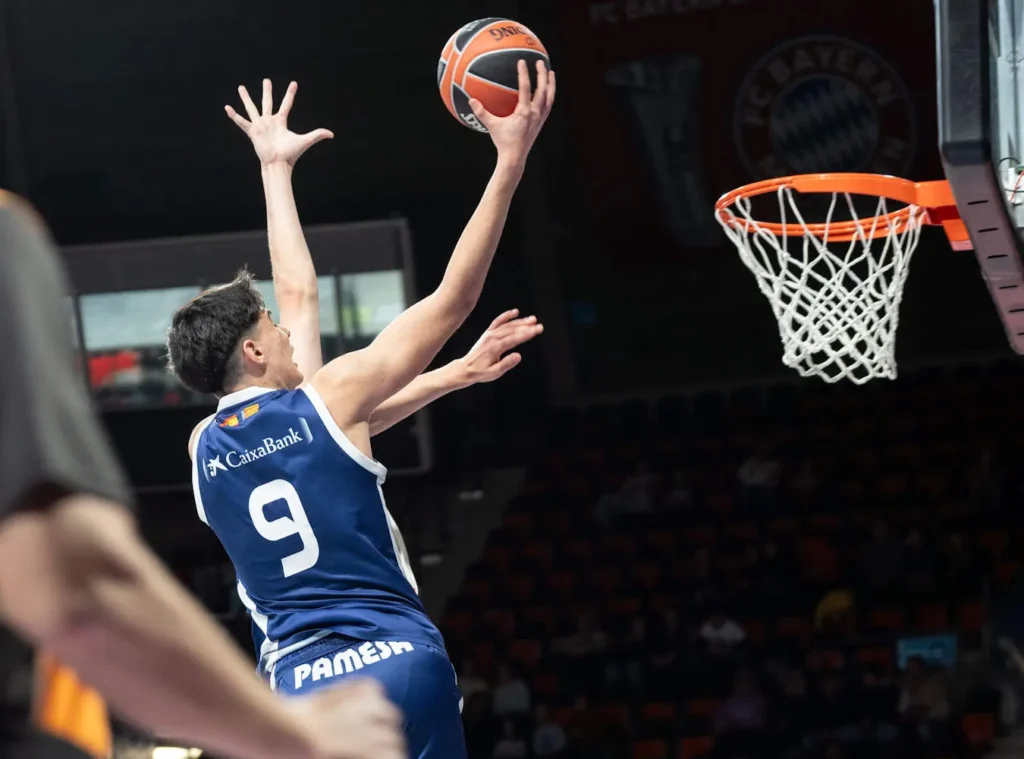
6’8 F Javier Viguer lacked consistency as a generator but continued to show why he’s such an intriguing talent, putting up 12 points and 4 rebounds per game and continuing to come up big in clutch moments, including an outrageous movement 3 in the final minute of a tight game against Cedevita Olimpija Ljubljana in the group phase. Viguer is making gradual progress in his jumpshot and has looked just as good at the U18 level as he did this summer at the FIBA U16 European Championships, having positional size and mobility for the forward spot and showing the flashes of individual creation and shotmaking that make him an intriguing prospect for the college ranks. 6’9 C Daniel Osayi continues with his fast progression, although he only averaged 6 points and 3 rebounds here for Valencia Basket. A late-blooming big that only recently started playing high-level basketball, Osayi has good length for a big man, is light on his feet and shows flashes of mobility, shooting and faceup skill. Still young having only recently turned 16 years old, Osayi has plenty of time to continue developing but should be on college teams’ radars as a 2008-born player. Fellow 6’9 C Nicolás Gómez, a staple of the Spain youth National Team, contributed too with 12 points and 8 rebounds per game, using his size, length and touch around the basket to produce in post-up situations or in pick-and-roll sets. Finally, 6’2 G Pau Torrens was very good here in Munich, putting his explosiveness, jumpshot, shiftiness off the dribble and scoring instincts to good use to the tune of 16 points per game. Torrens is more of a scoring guard than a point guard, but his combination of scoring and athleticism with a good tactical sense should make him a candidate for D1 schools too.
Real Madrid
The frontrunners at this qualifying tournament, Real Madrid lost the key game against the Adidas NextGen Select Team Munich in the key group phase game and finished third after a convincing win against Cedevita Olimpija Ljubljana in the final day. 6’8 F Nacho Campoy led the way for Real Madrid. Campoy, who has long been an elite rotation player for Real Madrid and the Spain National Team, contributed with his usual opportunistic scoring off of cuts and in transition and his monster rebounding, averaging 12 points and 7 rebounds per game and earning a spot on the All-Tournament Team. More interestingly, he’s splitting time between the 3 and the 4 this year after playing almost exclusively as a 4 last season, and is showing some flashes as a ball-handler, with a sweet-looking one-dribble pull-up and some instances of pushing the ball in transition himself. Still a fundamentally-sound player on both ends, Campoy should absolutely be a target for college programmes as a coach’s dream: a versatile, superbly physical and gritty defender that plays with a relentless motor (led this Munich Qualifier in steals at 2.5 per game) and can seamlessly slot into an off-ball role, contributing off spot ups, cuts, transition opportunities and offensive rebounds next to more ball-dominant perimeter creators.
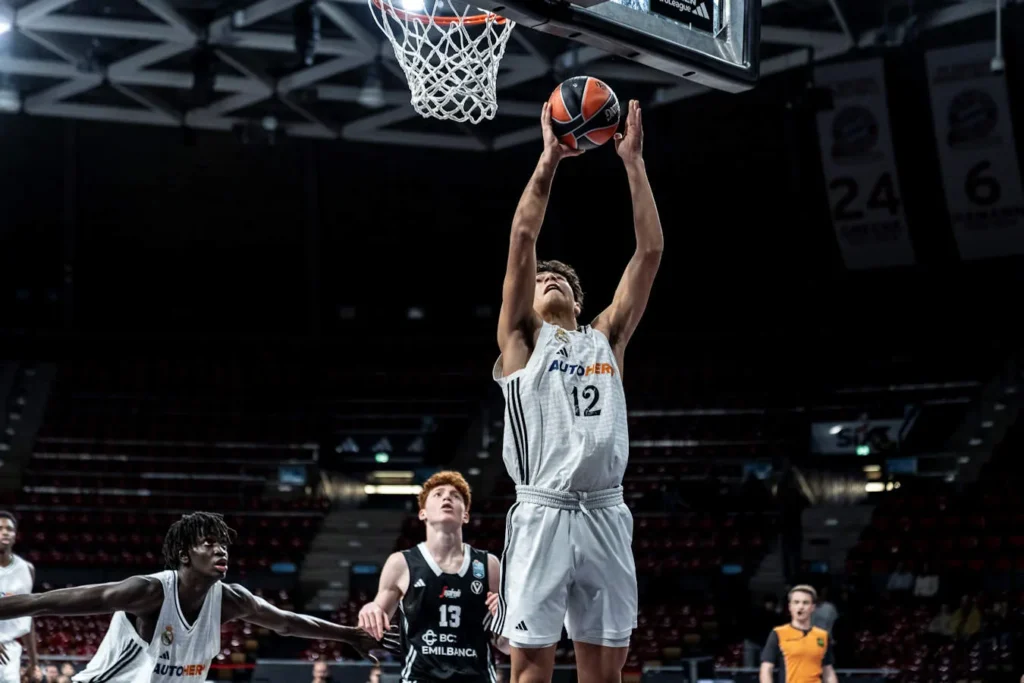
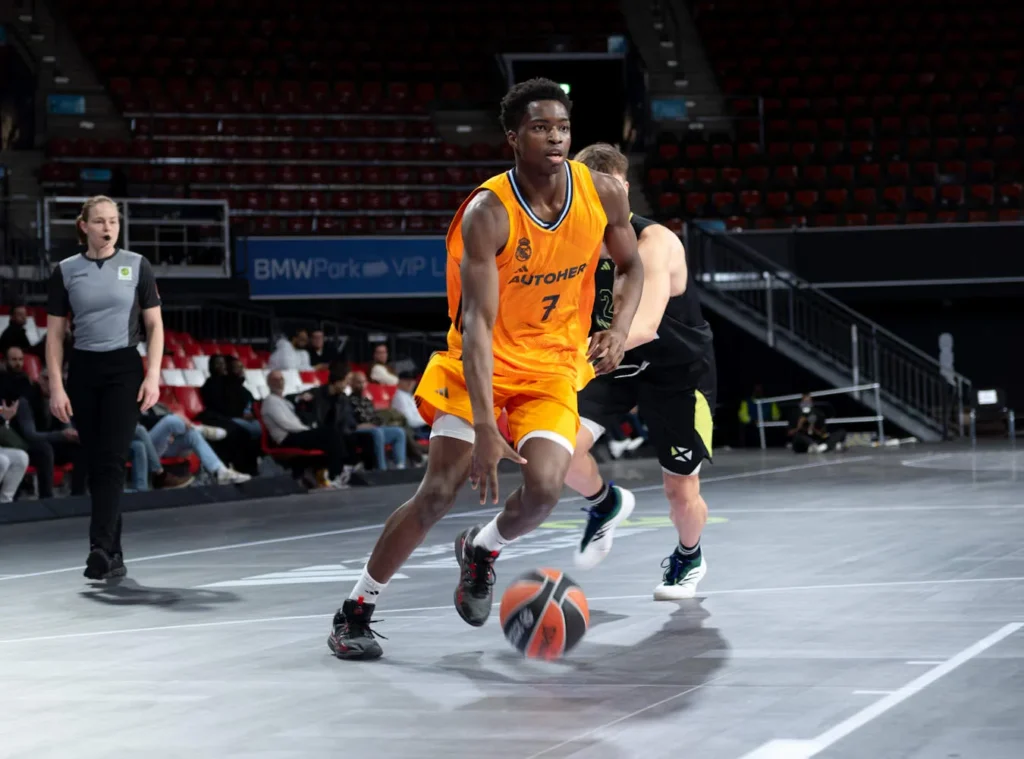
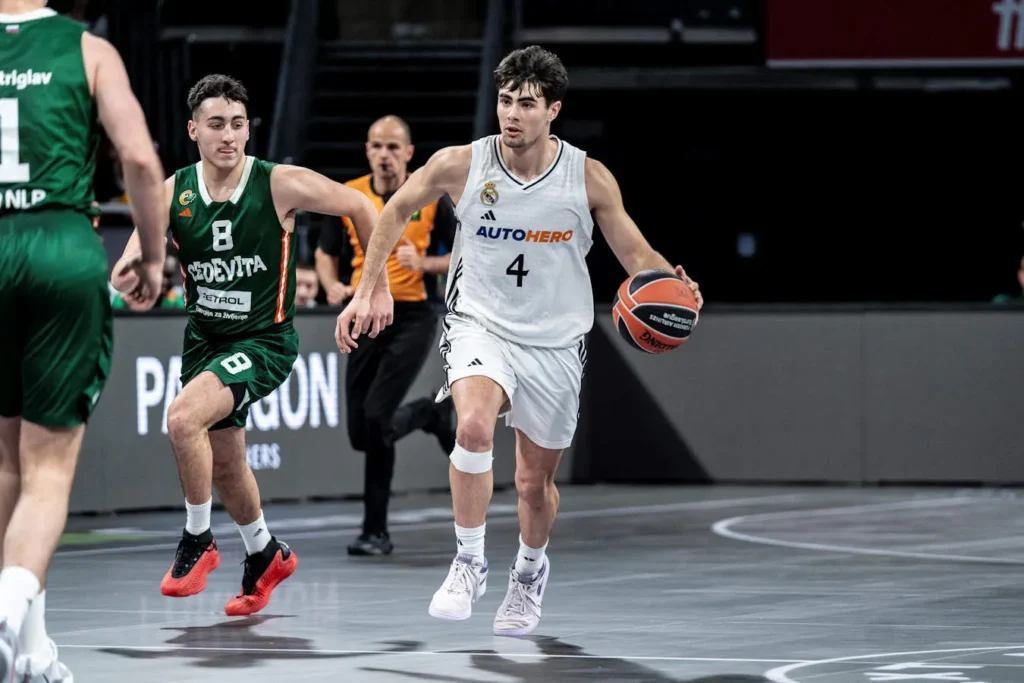
Beyond that, 6’8 G Fabian Kayser played two years up here but was tasked with plenty of individual creation. Although he couldn’t quite carry Real Madrid to victory against a solid NextGen Select Squad, Kayser showed off his scoring prowess here with 13 points per game, generating midrange and long-range shots in isolation against elite defenders and making them quite accurately, shooting a scorching 47% from deep at this Adidas NextGen Euroleague Qualifier. He looked significantly more comfortable now than he did at the start of the season and continues with his encouraging progression since arriving in Real Madrid this past summer. 6’6 F Gildas Giménez remained his usual productive self here in Munich, averaging 10 points and 4 rebounds per game, getting to the basket with ease and displaying his physicality on drives. He remains an excellent defensive prospect, a nightmare of a matchup combining size, strength, length and lateral quickness and being an integral part of a suffocating Real Madrid defense. Finally, 6’4 G Max García-Plata was at times the lead creator for Real Madrid. Averaging 11 points and 2 assists per game, García-Plata delivered his standard performance of creative and ballsy offensive play, generating and converting on tough off-the-dribble shots, finding the roll man in pick and roll and providing Real Madrid with a change of pace offensively. Despite having subpar athleticism for a college guard, García-Plata’s combination of shotmaking, ball-handling, competitiveness and creative passing should make him a target for D1 schools.
Cedevita Olimpija Ljubljana
This was yet another notch on 6’6 G Mark Morano’s belt, putting up 21 points, 6 rebounds and 4 assists per game and looking like one of the best perimeter creators in the European youth landscape right now. With good positional size for a guard and a strong, sturdy body with good athleticism, Morano is simply a great scorer, contributing here in Munich off the dribble for self-created jumpshots, putting pressure on the rim with his size, strength and craft and taking and making spot-up jumpshots too when playing off the ball en route to an All-Tournament Selection. A superbly productive player in every setting he’s played, Morano should be a name to watch this summer at the FIBA U18 European Championship and is clearly a top-level prospect for the college setting.
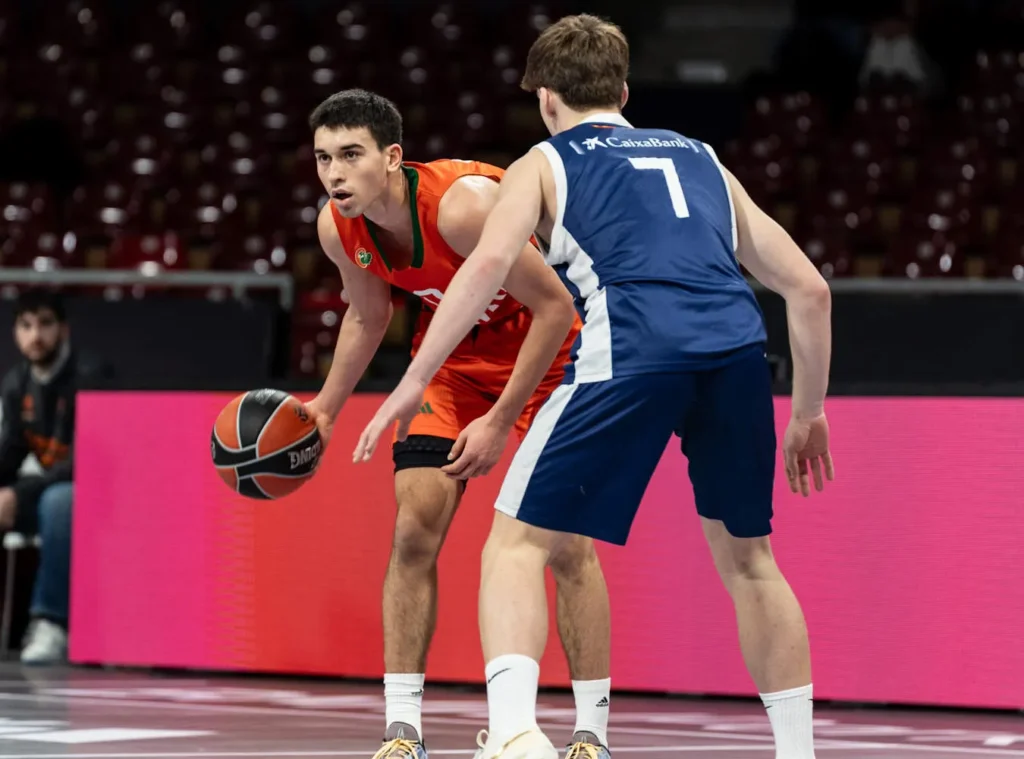
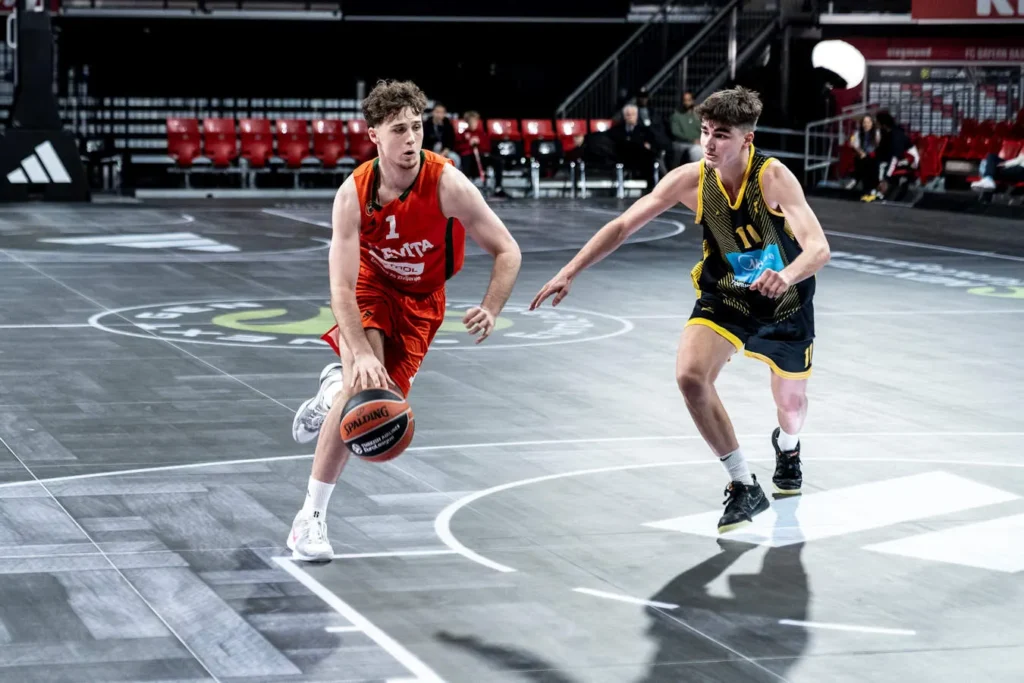
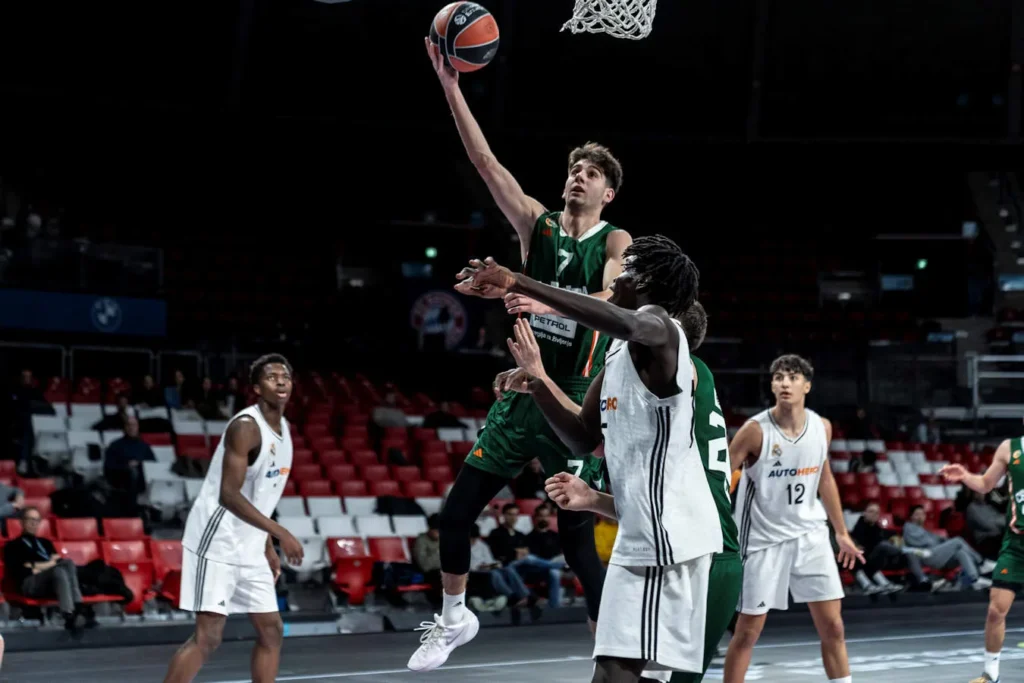
Fellow Slovenian 6’8 G Ian Lazarevski also had an intriguing showing, despite being a bit more up-and-down throughout the tournament, and finished with 12 points, 6 rebounds and 5 assists per game. Lazarevski can generate both in isolation and in pick and roll, with excellent fluidity, good ball-handling and good, long strides to go with some burst and athleticism and the court vision and passing skill to find open teammates once he has broken the paint. He is not able to apply all these skills at once consistently yet, but the flashes remain intriguing. 6’4 PG Luka Stojic, who already had an intriguing FIBA U17 World Cup for Germany, showed considerable improvement here in Munich, scoring and distributing effectively to the tune of 14 points and 5 assists per game. Stojic looked as good as he always does, with polished ball-handling and shooting stroke, but was able to make a much more consistent impact, getting by his man effectively and setting up teammates as well as knocking down perimeter shots with confidence.
FC Bayern Munich
With a team featuring several younger high-level prospects, Bayern Munich were not really able to contend here, but they should be pleased with their prospect’s progression. 6’5 G Sermpezis was the unquestioned leader of this group, averaging 20 points per game and carrying plenty of the on-ball generation load for Bayern. A guard with good positional size at 6’5, decent strength, some athleticism and a good jumpshot, especially off the catch, Sermpezis was the most consistent threat for the Bavarian side, using his athleticism to generate in pick and rolls, breaking the paint for some finishes and for drive-and-kicks, leveraging the threat of his jumpshot to drive and otherwise using his crips, compact jumpshot to produce points as well. His solid jumpshooting and positional size, along with the upside he has a secondary generator, should earn him some looks from D1 coaches.
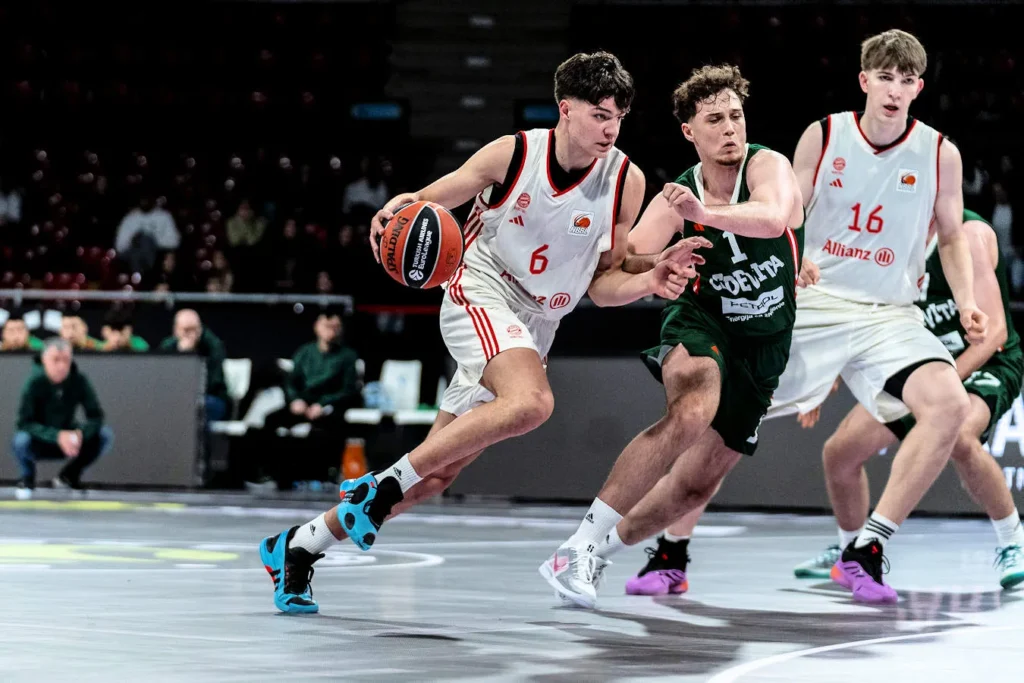
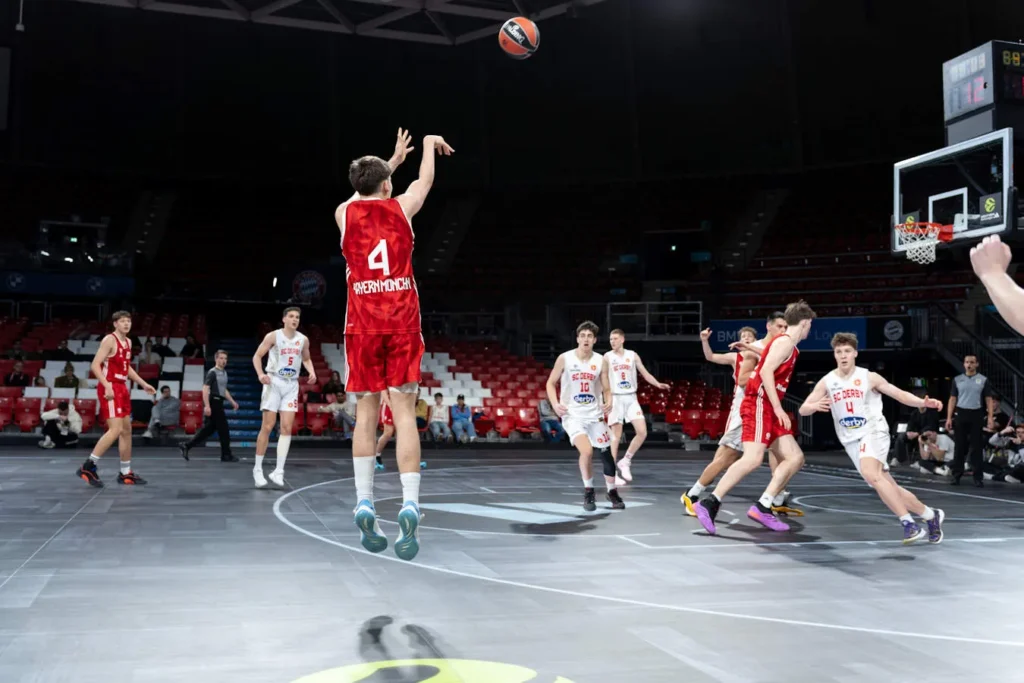
More importantly for Bayern, their young prospect really performed here. 6’8 F Caspar Vossenberg, fresh off a very good outing at the U16 Íscar Tournament a month ago, had another great weekend here in Munich, averaging 13 points, 3 rebounds and 2 steals per game playing as a 2009-born prospect with the 2007 generation. Standing at 6’8 solidly built and with plus athleticism, Vossenberg has an excellent ability to elevate around the rim for finishes and to drive and finish through contact. The jumpshot looked good as well, especially off the catch, and although he does look more mature physically than some of his peers, he was clearly a plus athlete while playing two years up against top-level competition, which is a clear upside marker. Similarly, 6’3 G Marko Volf was absolutely excellent, averaging 8 points, 3 rebounds and 2 assists per game while, in his case, playing three years up as a 2010 prospect. Volf is fast but controlled and has an excellent ability to withstand contact both when dribbling in traffic and when finishing at the rim. He was calm, collected and poised and did an excellent job directing the team, all while constantly looking to probe, trying to get to the rim and contributing too as an off-ball player with a very solid catch-and-shoot jumpshot. It’s still very early for Volf, but he clearly looks like a top prospect in a stacked European 2010 generation.
SC Derby Podgorica
6’10 C Brajovic was SC Derbi’s most impactful player. With solid size inside, good mobility and coordination and enough skill to produce in post-up situations and to play the pick and roll confidently, Brajovic was one of the best big men in this Adidas NextGen Euroleague Qualifier, averaging 11 points and 5 rebounds during the weekend. Brajovic has somewhat deceptive physical tools, as he’s faster and mora athletic than he seems at first glance and combines that with positional height for a C and a good awareness of the game, finding corner shooters in short-roll situations and showing a couple of instances of smart big-to-big passing.
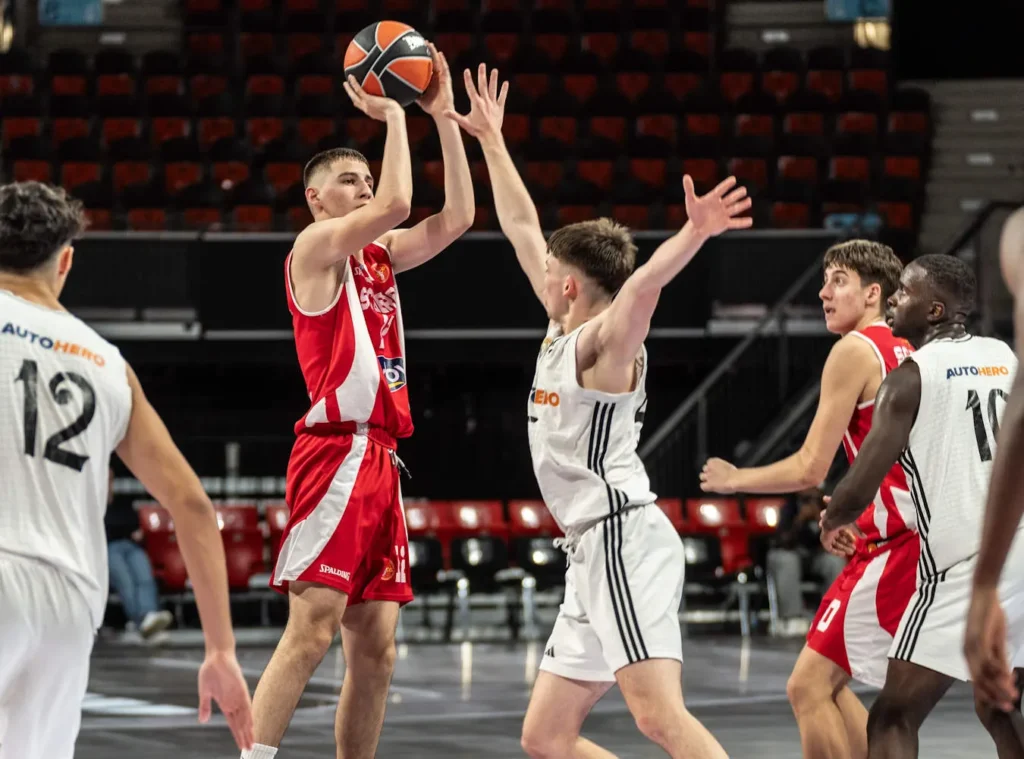
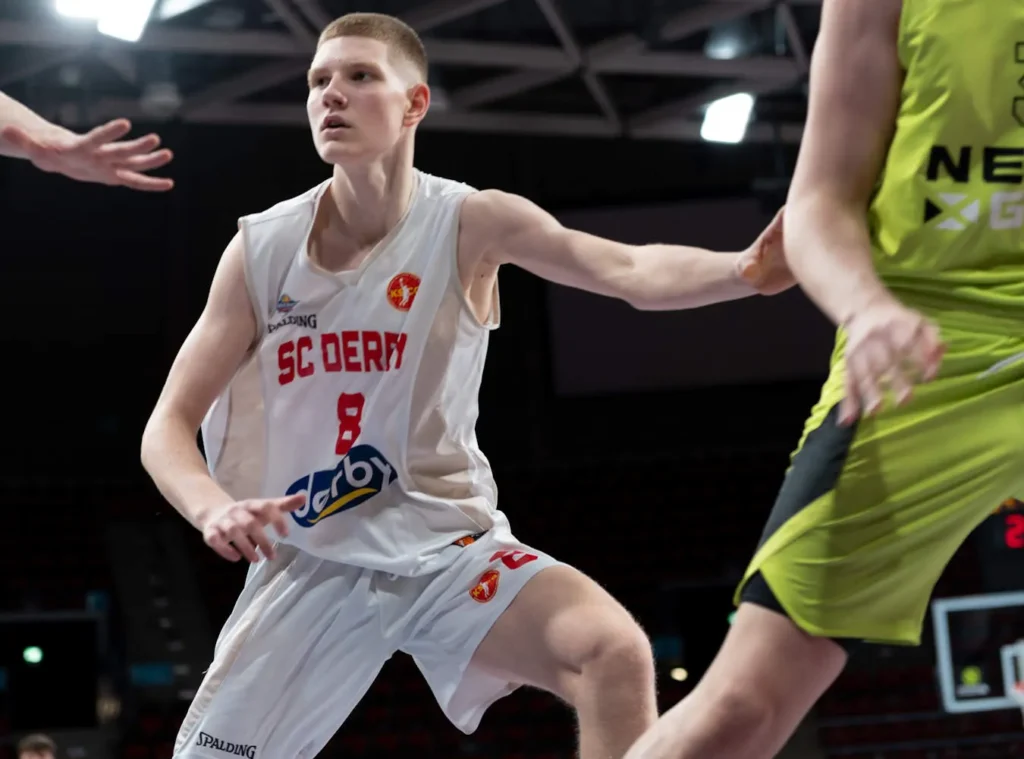
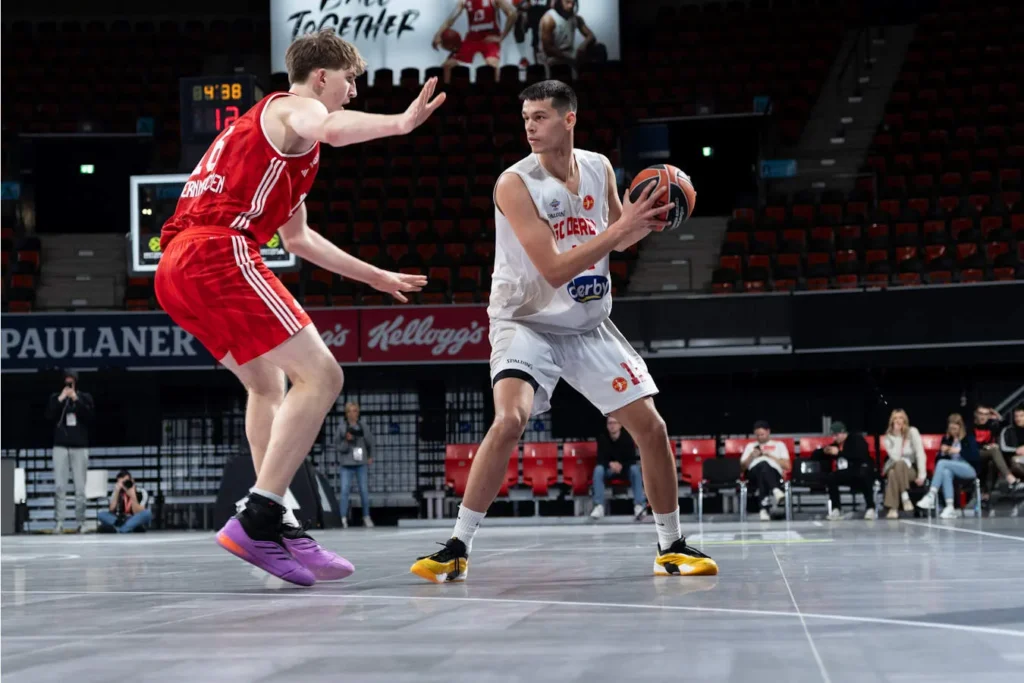
6’6 G Vuk Todorovic was one of the surprises of the tournament. A still lanky and long guard with positional size and good speed and athleticism, Todorovic showed some interesting flashes of self-creation, using his handle to break down opponents and get to the rim and squaring up to off-the-dribble jumpshots with good footwork and confidence. He finished the tournament with averages of 9 points, 3 rebounds and 2 assists per game and, while it’s still early for Todorovic, who looks like he will need a couple more years of maturity and work on his body before he’s ready for the next step, he’s a prospect to follow for college programmes as a wing with upside to be an offensive off-the-dribble threat with positional size and athleticism. Finally, 6’7 G/F Marko Popovic, who was playing up two years here as a 2009 prospect, averaged 6 points and 5 rebounds per game and is starting to fulfil on the upside he had as a U14 player. Popovic, a wide-shouldered, strong player with good athleticism even for the U18 level, was playing mostly in a spot-up role here, taking off-the-catch 3s, driving closeouts and contributing in transition, but his ability to play a role productively and hold up physically in a U18 high-level setting as a U16 player was impressive, and he still left some flashes of footwork and skill in transition too.
Aris Midea Thessaloniki
Missing their best player in injured 6’6 SG Chrisostomos Chatzilamprou, Aris did about as well as could be expected, competing against more talented squads for stretches of this qualifier behind the leadership of their two star guards. 6’6 Vassilis Pourlidas was the headliner, putting up 16 points per game on an efficient 37% from 3 in the tournament and taking on plenty of responsibility both off the catch and off the dribble. A reliable shooter in catch-and-shoot situations with good shot preparation and a quick release, Pourlidas was also able to drive into the paint to generate some midrange jumpshots, complemented his shooting with some nifty floaters and contributed on the boards, but struggled a bit with turnovers as he was tasked with most of the creation load on this Aris squad.
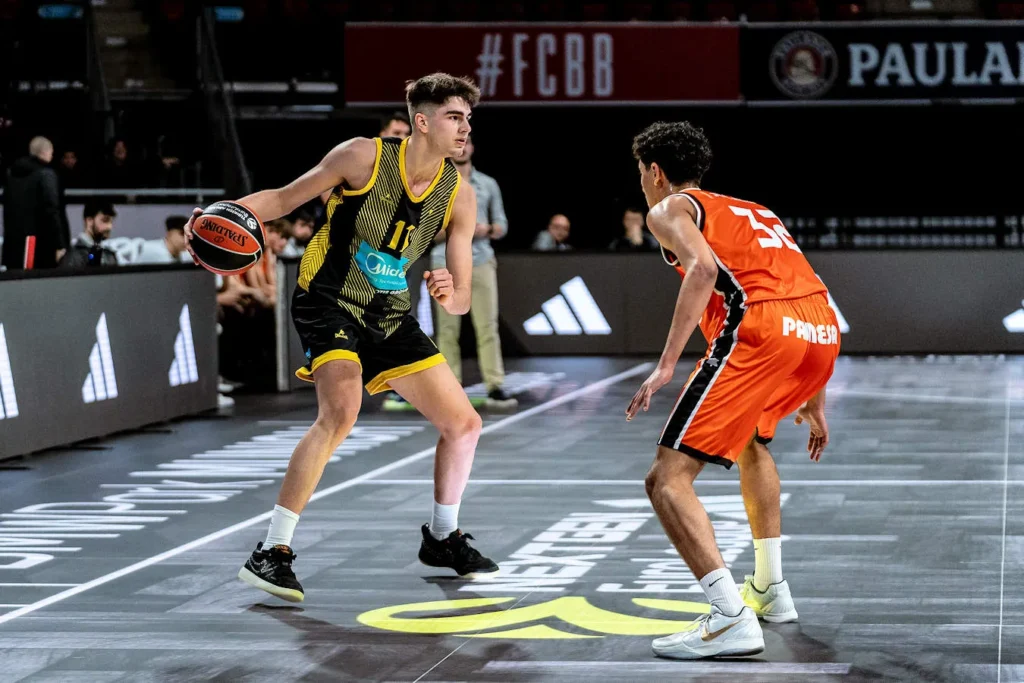
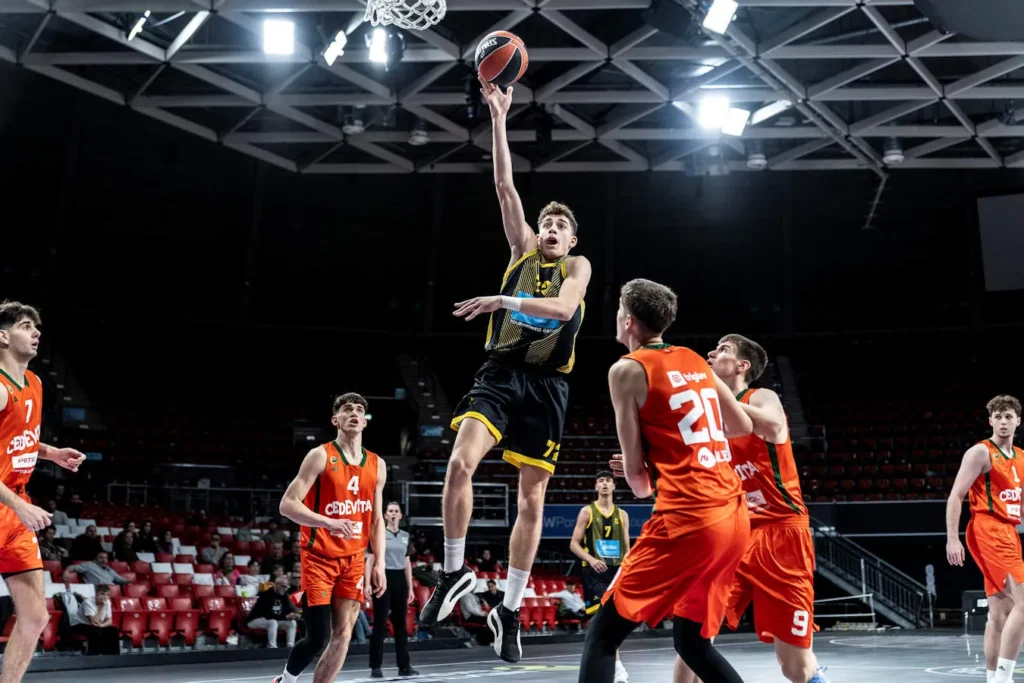
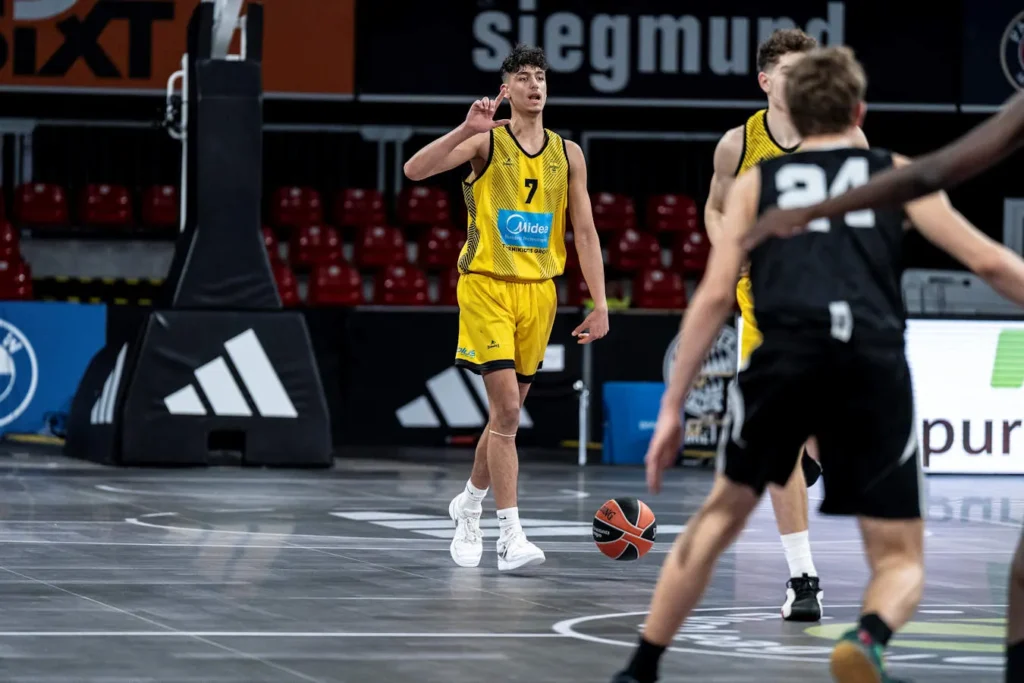
6’6 G Vasileos Kazamias also scored proficiently, putting up 17 points per game, even if his percentages suffered slightly while having to shoulder quite a high creation burden for Aris. Kazamias, however, posted good assist numbers at 5.5 per game, a reflection of his ability to draw the defense in on his drives and kick out to shooters. Finally, 6’7 F Marios Giannikos was also an intriguing player, averaging 10 points, 7 rebounds and 2 steals per game. Giannikos was effective as an off ball cutter finding open spots in the defense, and was productive here despite being outmatched physically against other froncourts, even if his percentages suffered a bit as a consequence. Still, Giannikos did drop a couple of highlight-reel finishes, using his deceptive athleticism to finish through and over defenders at times.
Virtus Segafredo Bologna
Virtus Segafredo Bologna finished last here in Munich, but competed hard considering that they were thoroughly outmatched in this setting. 6’4 G Matteo Accorsi was ultimately their best performer. A member of the golden 2007 Italian generation, Accorsi finished this qualifier averaging 14 points per game. His offensive contribution is built around the jumpshot, as he puts up quite a large volume of 3s at 11 attempts per 36, including some tough off-the-dribble and off-balance attempts. While his percentages from deep were not outstanding at 30%, the degree of difficulty was quite high considering the context and his shooting should be an asset going forward.
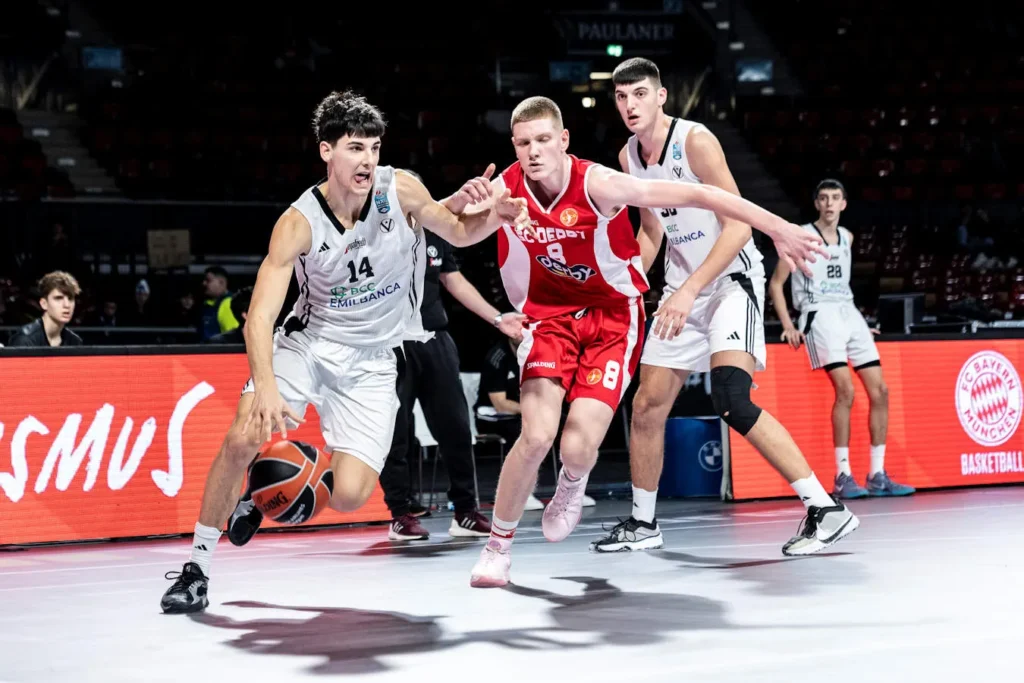
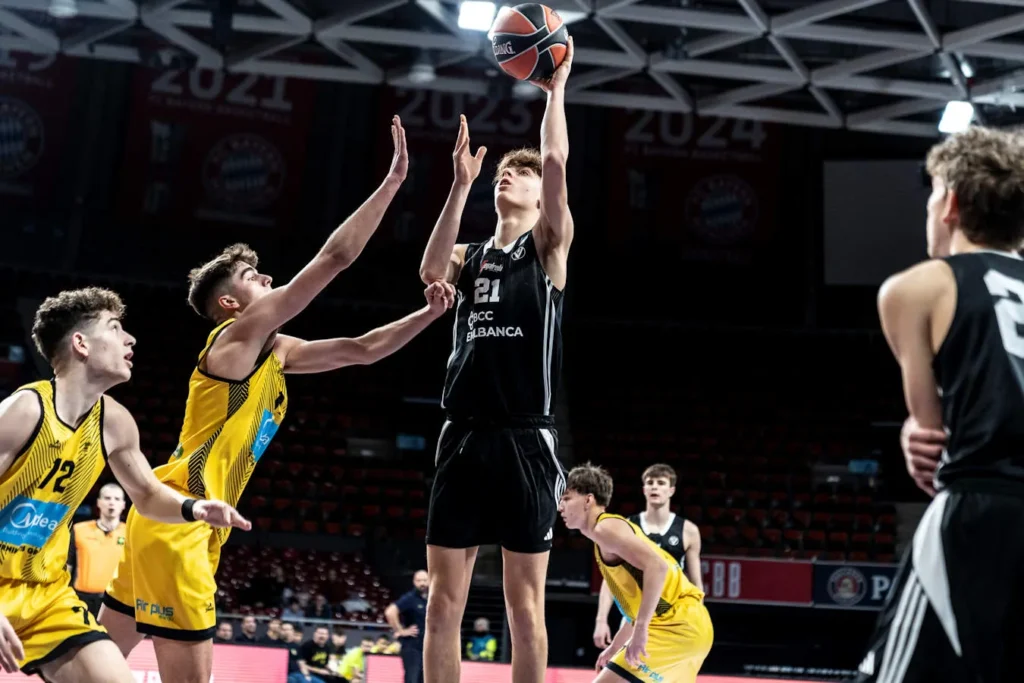
However, Bologna’s most intriguing talent was 6’8 G/F Matteo Lenci. A still lanky and thin player despite being in his last U18 year, Lenci scored 13 points per game while leaving some tantalising flashes of upside on the ball, being able to generate his own shot despite struggling with a lack of strength, using his size to get to his jumpshot and shoot over opponents in the midrange and showcasing an interesting —if still a bit loose— handle that he used to drive by defenders and finish around the rim. His contribution in other areas was limited, including somewhat underwhelming rebounding numbers for a 6’8 prospect in a U18 setting, but Lenci is indeed quite thin and his body still needs to fully mature. As his athleticism rounds out, he should be able to both impact the game more on the margins and improve his scoring output, and college coaches should absolutely keep an eye on him, even if he likely won’t be ready to join the college ranks until a couple of years from now.











